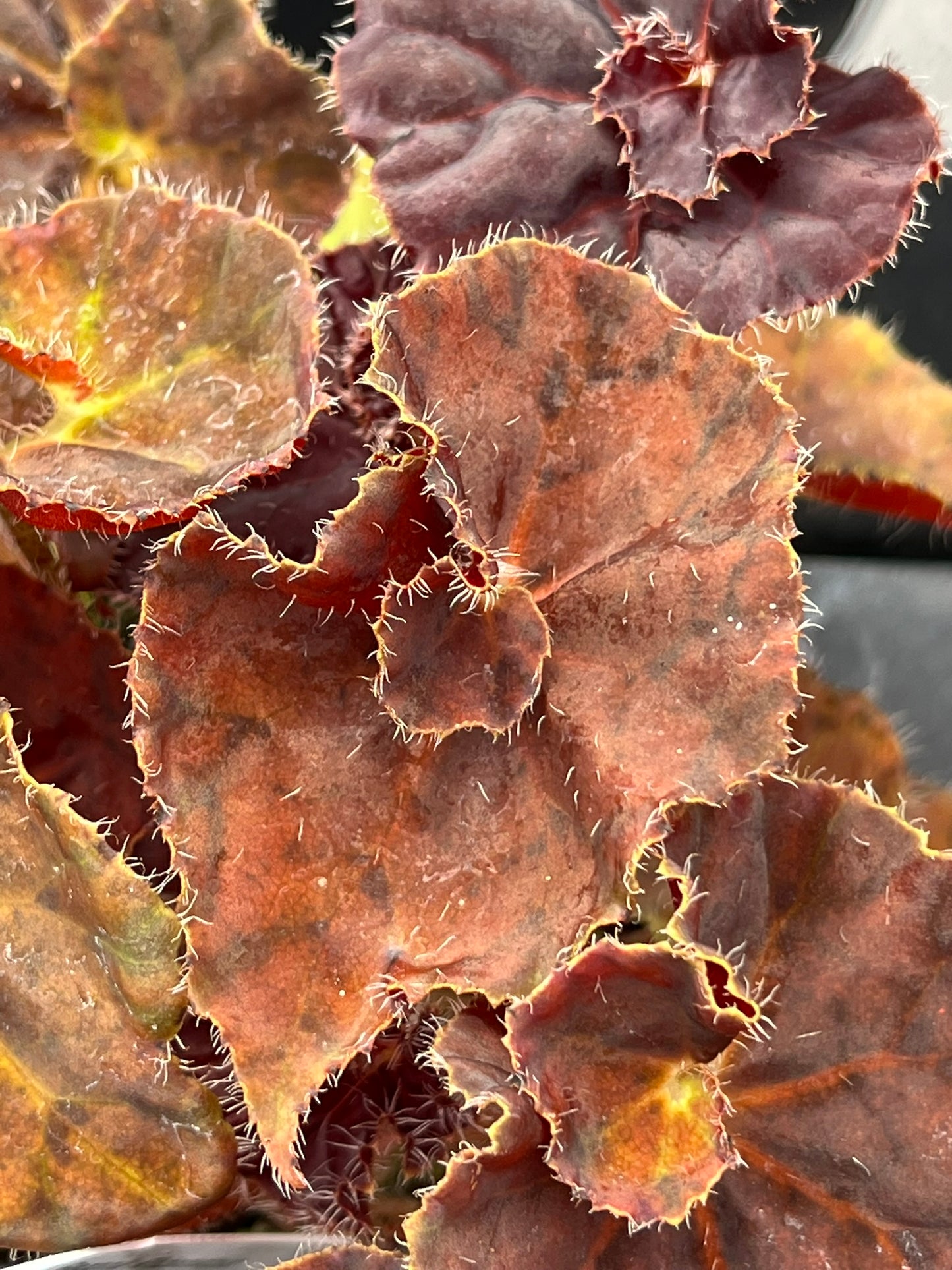Plant Hoarder
Begonia Angel Glow
Begonia Angel Glow
Couldn't load pickup availability
Share
Hardiness Zone:9
Sun Exposure:Part Sun, Mostly Shade and Shade
Begonia ‘Angel Glow’: A Glowing Jewel for Shade Gardens
How to Grow, Care For, and Fall in Love with This Glowing Beauty
Begonia ‘Angel Glow’ is more than just a pretty face. It’s a radiant, shade-loving showstopper that brings light and charm to any quiet corner of your garden. With its glowing leaves and delicate blooms, ‘Angel Glow’ gives us something truly magical—a plant that thrives in the shadows yet shines like it’s kissed by sunlight.
If you’re looking for a way to add color, texture, and elegance to your shade garden, patio pots, or even indoor space, this begonia is your go-to choice. But don’t worry—caring for Begonia ‘Angel Glow’ is surprisingly easy. With just a little knowledge, you can keep this beauty glowing bright all season long.
What Makes ‘Angel Glow’ Special?
Let’s start with why gardeners everywhere are falling head over heels for this plant.
-
Foliage that Glows: The leaves are a dreamy blend of soft greens and glowing pinks. When the light hits just right, they almost shimmer.
-
Delicate Blooms: Pale pink to coral flowers rise gently above the leaves, adding a soft, floral touch without overpowering the foliage.
-
Compact and Neat: It stays tidy, rarely getting too leggy or overgrown. Perfect for containers, baskets, or as an accent in shady borders.
-
Easy to Grow: Despite its exotic appearance, ‘Angel Glow’ is surprisingly forgiving. Even beginner gardeners will find success.
How to Grow Begonia ‘Angel Glow’
Let’s walk through exactly how to give this plant what it needs to flourish.
1. Light
Begonia ‘Angel Glow’ prefers bright, indirect light or dappled shade. It doesn’t do well in harsh sun—it will burn the leaves. On the other hand, too much deep shade can make it stretch and lose its color.
Best light? Think morning sun or the bright edges of a shaded area. Indoors, place it near an east or north-facing window.
2. Soil
Use a well-draining, airy mix. These begonias don’t like soggy soil. A blend of peat moss, perlite, and compost works great. If you’re planting in a pot, make sure there are drainage holes.
Want a quick DIY soil recipe?
-
2 parts peat moss or coco coir
-
1 part perlite
-
1 part compost or aged bark
3. Watering
Water when the top inch of soil feels dry. Begonias like consistent moisture, but they hate being waterlogged. Overwatering is the fastest way to lose this plant.
Tip: Water at the base—wetting the leaves can cause spots or mildew.
4. Humidity
This is a big one. ‘Angel Glow’ loves humidity. Think 50% or higher. If your home is dry, try these tricks:
-
Place a pebble tray with water under the pot
-
Group it with other plants to create a mini microclimate
-
Use a small room humidifier
If you're growing outside in the South or in a shady courtyard, chances are the humidity is perfect already.
5. Temperature
Begonia ‘Angel Glow’ prefers temps between 60–80°F (15–27°C). It’s not frost-tolerant. If you’re in a colder climate, treat it as a summer annual or bring it inside for winter.
Fertilizing ‘Angel Glow’
Feed lightly—but regularly. Use a balanced, water-soluble fertilizer every 2–4 weeks during the growing season (spring through fall). Go with something like 10-10-10 or 20-20-20, diluted to half strength.
Don’t fertilize in winter when growth slows down. Let the plant rest.
Pruning and Maintenance
Begonia ‘Angel Glow’ is pretty low-maintenance. Here’s what to do:
-
Remove dead or yellowing leaves to keep it clean and healthy
-
Pinch back tips if it gets leggy—this encourages fuller growth
-
Wipe leaves gently if dust builds up indoors
And the blooms? No need to deadhead constantly. But removing spent flowers can tidy things up.
Growing in Pots or in the Ground?
Great news—you can do both.
In Pots
This is the most popular choice. Use a container with drainage holes, fresh potting mix, and place it somewhere shady but bright. Terracotta pots are excellent—they breathe and help prevent overwatering.
In the Ground
If you live in a mild zone (USDA Zone 9 or warmer), you can grow it outdoors year-round. Just make sure the soil drains well and the location is shaded. In colder zones, grow it as a summer annual or lift and overwinter it indoors.
Overwintering Indoors
If you want to keep your ‘Angel Glow’ for next year, here’s how to do it:
-
Bring the pot inside before nighttime temperatures drop below 50°F (10°C)
-
Place it near a bright window with filtered light
-
Cut back slightly if needed, and reduce watering
-
Don’t fertilize in winter—just keep it alive and happy
Once spring rolls around, you’ll see fresh new growth and can move it back outside after the last frost.
Common Problems (And How to Fix Them)
Even though ‘Angel Glow’ is easy, a few issues might pop up. Don’t worry—we’ve got answers.
-
Yellow Leaves? Usually from overwatering. Check drainage and let the soil dry more between waterings.
-
Brown Leaf Edges? Low humidity is often the cause. Increase humidity or move to a more sheltered spot.
-
No Flowers? Could be too much nitrogen fertilizer or too little light. Try shifting its location or feeding with a bloom booster.
-
Pests? Watch for mealybugs, spider mites, or aphids. Wipe leaves with insecticidal soap or neem oil weekly until they’re gone.
Why You’ll Love Begonia ‘Angel Glow’
It’s graceful. It’s low-maintenance. And it brings a soft glow to every space it touches.
-
Use it in a mixed container with ferns and coleus
-
Line a shady walkway with a border of glowing leaves
-
Brighten your indoor shelf with its colorful charm
Begonia ‘Angel Glow’ is the kind of plant that makes you pause and smile every time you see it. It doesn’t shout. It whispers beauty. And in a world that’s often loud and fast, that’s a rare and wonderful thing.
Isn’t it time your garden had a glow-up?


